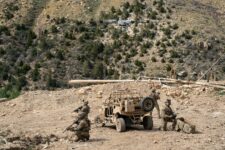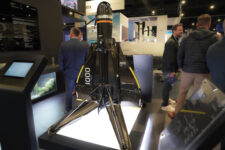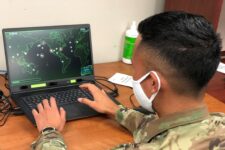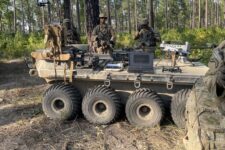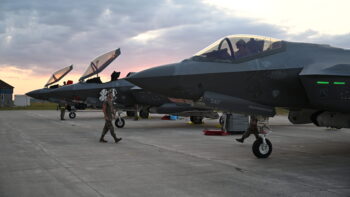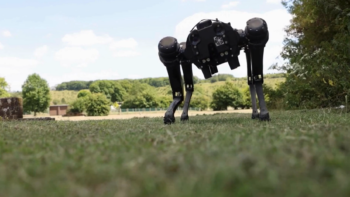
Sgt. James Hyman, Expeditionary Cyber-Electromagnetic Activities (CEMA) operator, 11th Cyber Battalion, gathers information from sensors to develop cyber effects, during an Operational Readiness Assessment for the battalion here, March 29, 2023. (Photo by Steven Stover/780th Military Intelligence Brigade)
TECHNET AUGUSTA 2024 — The Army is making strides towards standing up its Theater Information Advantage Detachments (TIADS), a new kind of unit that seeks to monitor the information warfare efforts of adversarial nations like China and Russia at the field level.
Thanks to the hefty amount of equipment and personnel needed, these organizations are scheduled to stand up in fiscal year 2026. Lt. Gen. Maria Barrett, commanding general of Army Cyber Command, said this week that the service has received positive feedback to the idea internally.
She said that other “theaters were already itching to get this capability, so much so that organically, they pulled people from different areas in order to really start, jump-start their campaign of learning,” Barrett said, as she closed out the 2024 TechNet Augusta conference. These “different areas” referred to the redesignation of the US Army Pacific’s G39 staff, a group responsible for information activities, to the TIADs.
In February, the Army Force Structure Transformation plan approved the creation of three TIADS — one detachment in Europe, the other in the Pacific region and an interterritorial detachment for the Army Cyber Command.
“Army Cyber will take the civilian TDA [tables of distribution and allowance] and that will form the basis of a digital protection and reconnaissance center that will conduct targeting support and digital force protection tasks for the TIADs when they stand up,” Barrett said.
She said there will be 12 cyber teams, with 65 soldiers each, involved in the effort, which will include the Expeditionary Cyber-Electromagnetic Activities Teams, all part of the 11th Cyber Battalion. She added that when that structure is complete, they will add a “patrial build” of a second battalion which is “similar” to the 11th Cyber Battalion.
“This really reflects the commitment of the Army to bring together an integrated team of cyber, EW [electronic warfare], signals, data systems engineers, io [information operations], intel and psyops,” Barrett said.
“If you think about all the things that we are layering in over the next few years, this is going to be a renovation that’s going to be going on for a while. We’re going to be moving a lot of walls, and as we lay in those capabilities, we’re going to go out and make sure that they’re implemented correctly and that people understand their role in that picture,” she later added.
The urgency to stand up the TIADS comes from an increase in efforts from peer adversaries like China as the country attempts to disrupt the US’ critical infrastructure and other vulnerable realms, Barrett said.
“We’re also seeing attacks in cyber pick up — the attacks against the DIB [defense industrial base]. Either we’re getting better visibility into them or they are on the increase. Attacks against operational technology have also gone up, critical infrastructure, and I would be completely remiss if I did not mention the PRC’s Volt Typhoon,” she said referring to the Chinese state-sponsored hacker group known to go after US critical infrastructure.



